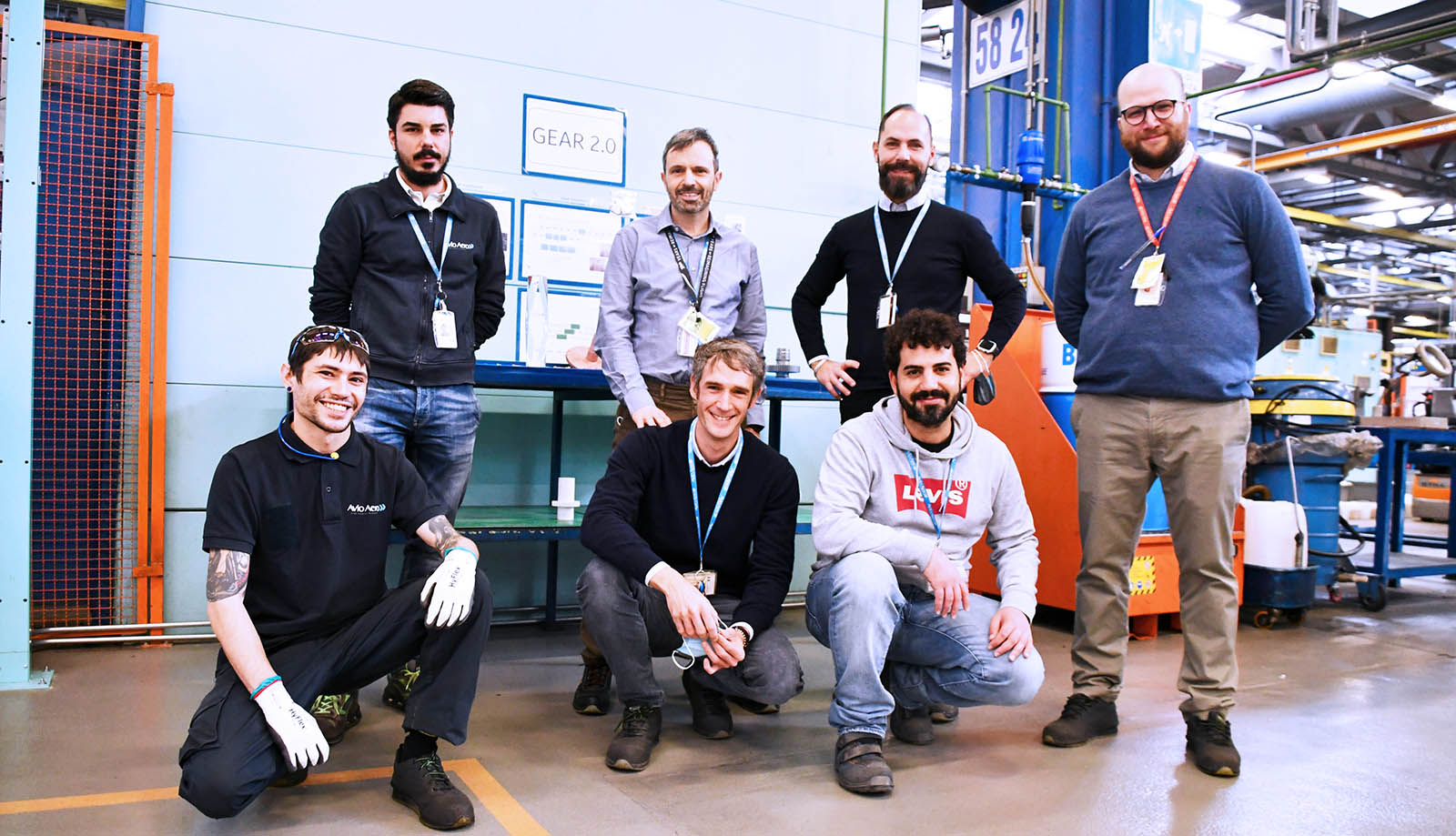Invent
Hoshin Kanri in action
We followed step by step one industrial processes inside the Turin's Rivalta plant to get into the heart of the Lean culture and discover how strategy and daily operations are closer than they seem.
May 2022
When we talk about Hoshin Kanri, the thought immediately goes to the Japanese concept of "alignment between the strategic goals of an organization" and every person in it. In order to achieve this alignment, the meaning of the business strategy must be able to be visible and understandable at every level of the organization, so as to guide every action and decision.
This is one of the main challenges in Lean: while it is typical for an organization to identify and implement structured projects with defined actions, it is usually more complex to ensure alignment between these actions and the strategy by which they are inspired, or implemented.
At the Turin’s Rivalta plant, Hoshin Kanri is a daily process that allows the involvement of every single person in a process and keeping them "hooked" to the strategy. This process began last year and has already achieved a certain expansion, so much so as to include the entire perimeter of the transmission area of the Turin headquarters.
In each area of production, there is a control center where the strategic plan is viewed and discussed weekly, which is the point of troubleshooting. Each team member is able to access information on the action plan in real time and can contribute to execution of the strategy during operating sessions.
Ensuring alignment between all business functions and all production processes involved would have been much more complex without these tools for problem solving and escalation.
To understand how this process is put into practice, we entered the Rivalta plant and followed step by step Patrizia Mazza and Stefania Oliva, respectively Avio Aero GSC Lean Leader and Rivalta Plant Lean Leader, who showcased the specific Lean solutions to cover all the production phases of an entire transmission (including, and involving, gears, housings, the spare parts warehouse and assembly kits).
By tracing the flow of a transmission from kitting (the area where the individual parts of the product to be assembled are located) to machining, we were able to see what happens when these parts follow a pull logic, i.e. a production logic in which you try to produce exactly what the market demands, both in terms of quantity and quality.
Marco Mercante, the operator in charge, collects the necessary material from the supermarkets (areas where materials and goods are made available to the operators and automatically restored when picked up from a shelf) located near the assembly area using some “moonshine" facilities (equipment and workstations built internally according to the directives of the operator himself) also equipped with graphic instructions to select the parts correctly and move them ergonomically.
"Having a clear idea of the processes to be followed and visualizing them contributes to a better control of the situation and greater awareness on the part of people"
Marco confirmed how, with this new layout and supermarket system, it is easier to take parts and prepare kits. Moving into the warehouse, the logistics operator follows the same principle to fill the moonshine structures based on the production launch sequence. Once the stock is complete, the logistics operator stops. Before beginning to implement pull logic, the warehouse team worked on the "5S" practice and visual management.
Once the kit is picked up from the assembly area, a signal is sent to the Gear area and received by the end-of-process supermarket. The gear operator thus obtains a sequence of parts to be picked up. The visual management of the supermarket helps all the people involved to see the current level of the stock, and has been developed by Francesco Massimino, Manufacturing Engineer of the Gears-Special Processes area.
When the parts are picked up from the supermarket, a signal is then required to inform the production lines of the need to start producing again. The Rivalta team has created a Digital system (HARK), developed together with IT, to make the signal go up the production cycle and reach each line in both the Gears and Castings areas.
"Making the strategy visible to all levels of the organization is the main purpose of Hoshin Kanri and helps to bring problems to the surface and facilitate their resolution," said Patrizia Mazza. "Having a clear idea of the processes to be followed and visualizing them contributes to a better control of the situation and greater awareness on the part of people."
This short guided tour is an example of how Hoshin Kanri, and careful daily shop management, can lead to the achievement of strategic goals set at the corporate level, and to do so through the contribution of each plant, department or an individual line. Aerospace manufacturing is mostly at the beginning of the Lean journey, but the first steps are the ones that most define the destination.







